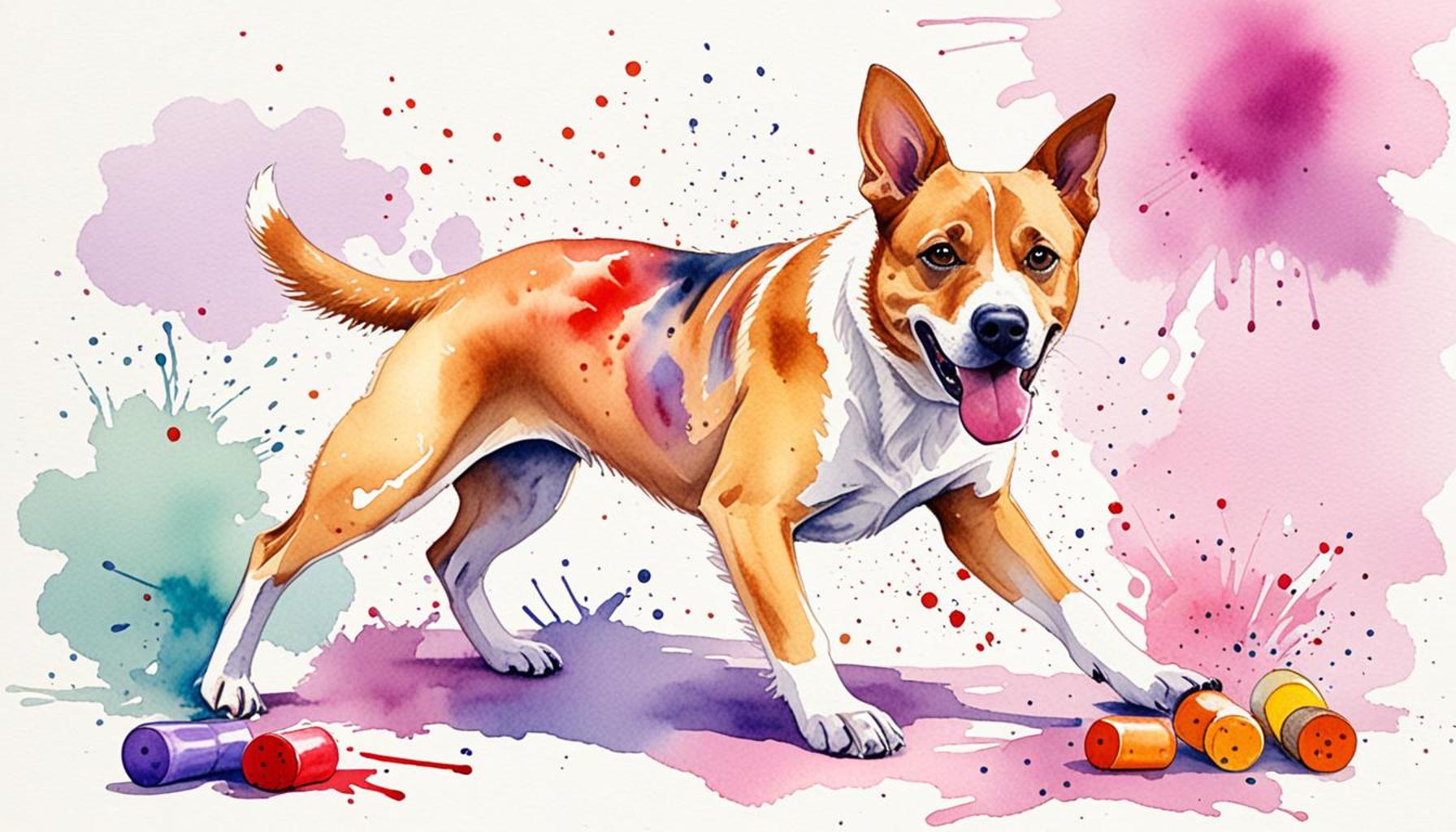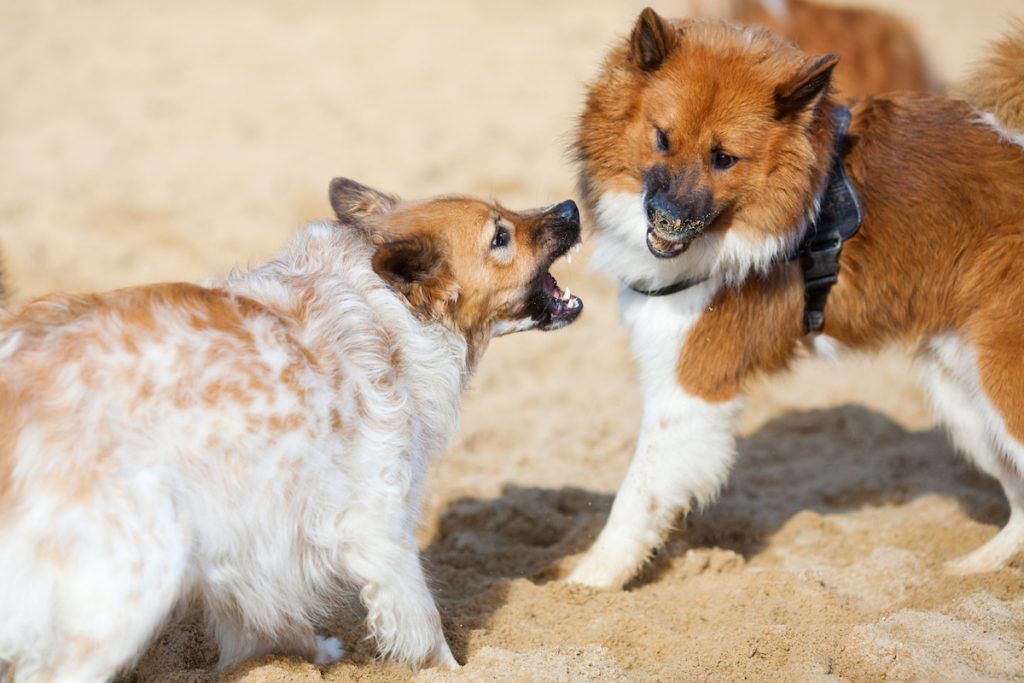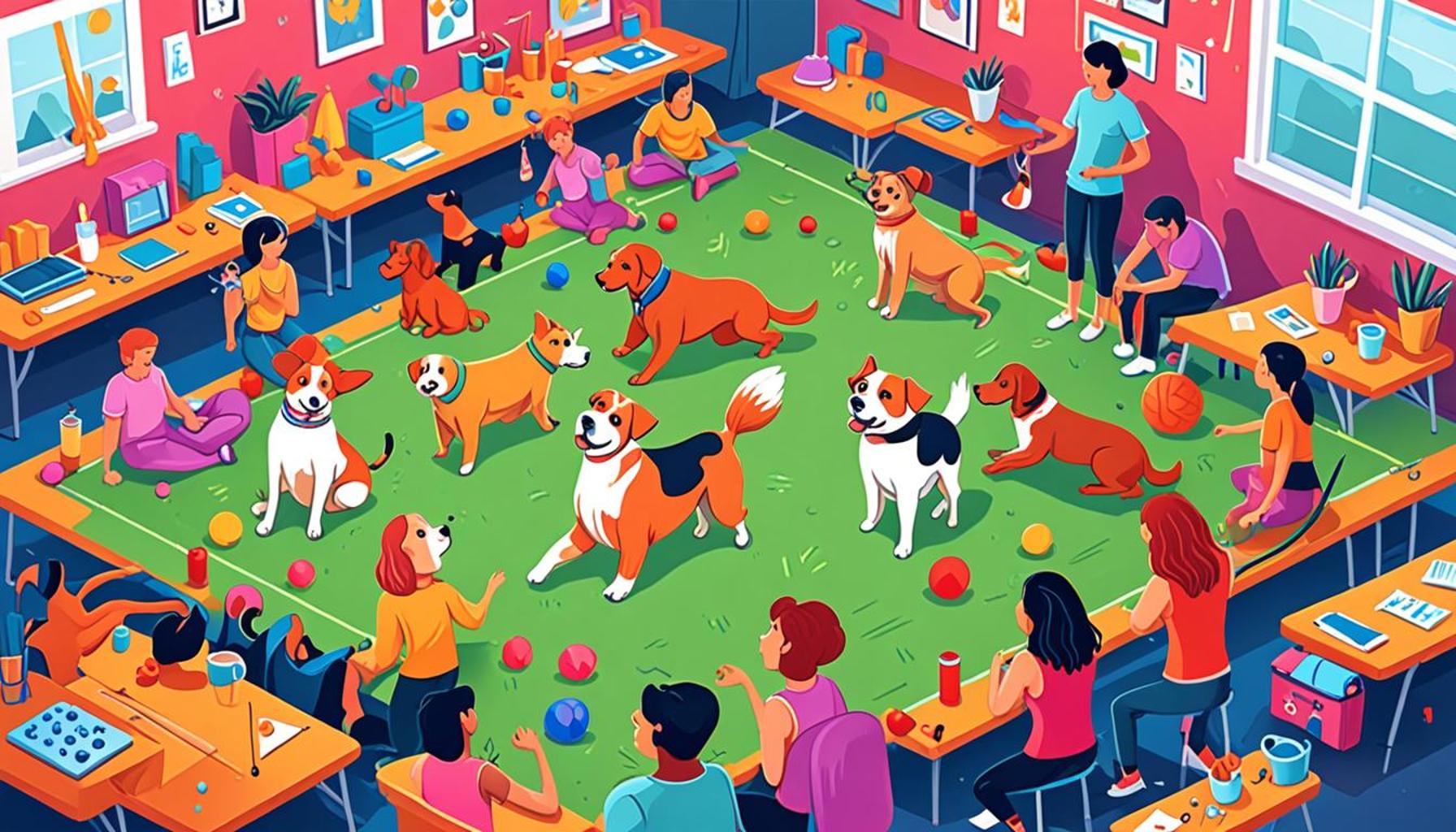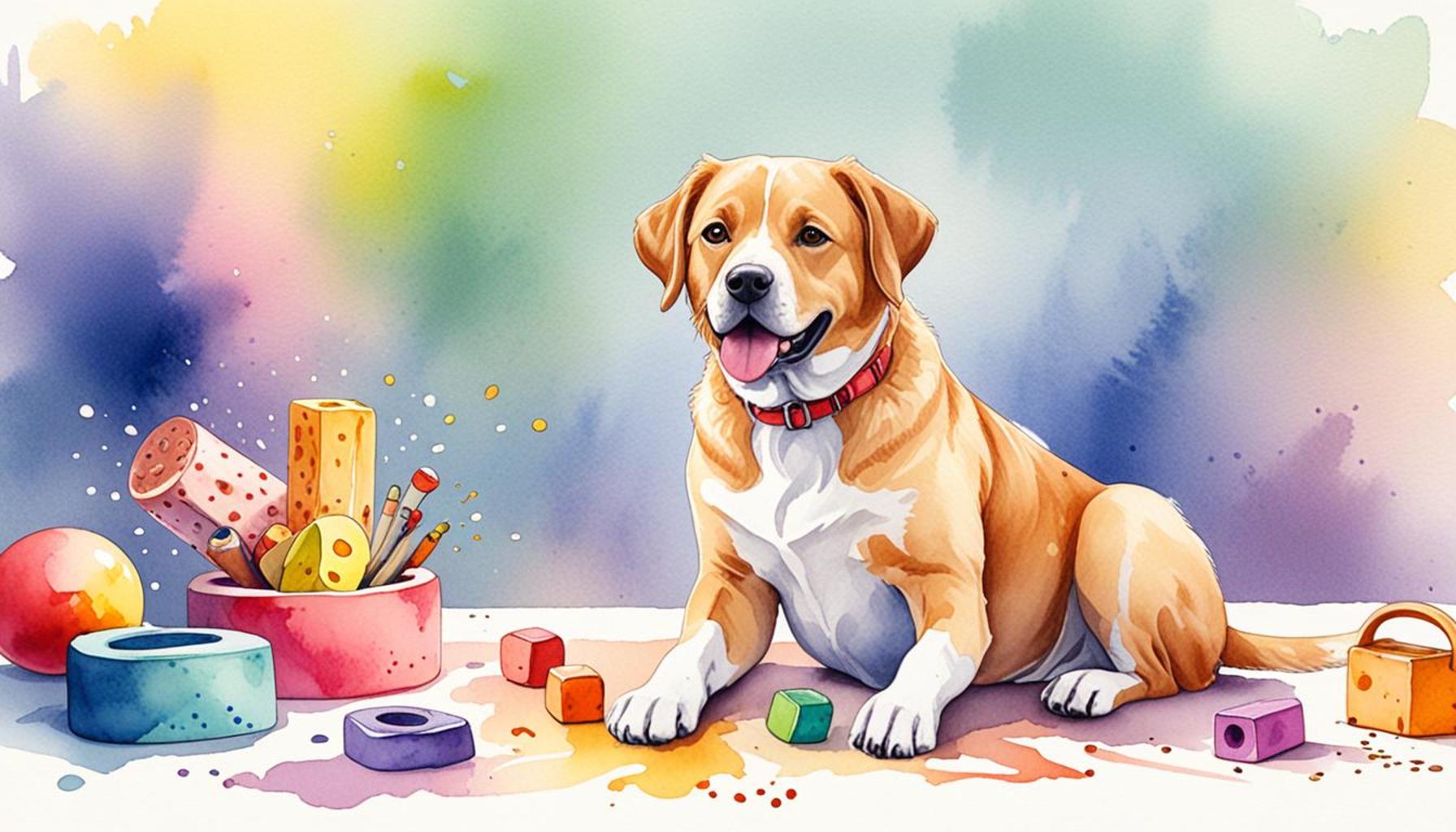Training Techniques for Reactive Dogs: Strategies to Manage Aggression and Fear

Understanding Reactive Dogs
Reactive dogs often display signs of aggression or fear when faced with specific triggers in their environment. Such triggers can vary widely, from encountering another dog during a walk to the startling sounds of thunder or fireworks. These intense reactions can not only lead to distress for the dog owner but also create significant anxiety for the dog itself. For many owners, navigating public spaces with a reactive dog can be a daunting experience, often turning a simple stroll into an exercise in stress management.
Why Training is Essential
Implementing effective training techniques is crucial for managing these behaviors. Both trainers and dog owners can use a variety of strategies to help reactive dogs feel more comfortable and safe in their surroundings. Understanding that reactivity often stems from fear or anxiety is key to addressing these issues. Here are a few pivotal techniques:
- Desensitization: This method involves gradually exposing your dog to the trigger in a controlled, low-stress environment. For instance, if your dog is reactive towards other dogs, you might start by having them observe a distant dog from a safe distance where they feel secure, slowly decreasing that distance over time.
- Counter-conditioning: This technique aims to change your dog’s emotional response to a trigger by associating it with something positive. For example, when your dog sees another dog, you can provide treats or toys, helping them connect the presence of the other dog with positive experiences.
- Positive reinforcement: Rewarding calm behavior is essential. When your dog remains relaxed in the presence of a trigger, offering treats or praise reinforces this behavior, encouraging them to remain calm in future encounters.
These strategies not only prove effective in managing reactivity but also foster a stronger bond between you and your dog. As you work through training techniques, you may find that both you and your dog experience growth in your understanding and relationship with one another.
Creating a Safe Environment
Establishing a safe space within your home is another critical aspect of managing a reactive dog. A secure environment can reinforce learning and help your dog feel less anxious. Consider designating a quiet area equipped with comfortable bedding and toys, where your dog can retreat when feeling overwhelmed. This space should be free of triggers, allowing your dog to relax without the fear of sudden encounters.
Additionally, being aware of your dog’s body language can assist you in creating a more positive environment. Signs such as a lowered tail, tucked ears, or averted gaze can indicate discomfort or anxiety. Learning these cues empowers you as an owner, helping you respond before a situation escalates.

Taking the time to learn about these techniques and the nuances of your dog’s behavior can significantly empower both you and your furry friend. By understanding their needs and triggers, you set the stage for a more harmonious cohabitation, where both you and your dog can thrive.
DISCOVER MORE: Click here to learn about balanced nutrition for your pet
Effective Techniques for Training Reactive Dogs
When it comes to managing a reactive dog’s behavior, the application of training techniques is not just beneficial, it is necessary. Each dog reacts differently to their stimuli, and understanding the intricate makeup of their reactivity lays the groundwork for effective management. By utilizing a series of carefully designed strategies, dog owners can dramatically improve their pet’s quality of life while cultivating a more peaceful coexistence. Here are some of the most effective training techniques you can employ:
Desensitization: A Gradual Approach
Desensitization is the process of introducing your dog to their triggers at a distance where they can remain calm. It’s crucial to progress slowly; attempting to push your dog too quickly can lead to heightened fear and aggressive reactions. For example, if your dog is uncomfortable with other dogs, begin by observing a dog from afar during your walks, gradually reducing the distance as your dog grows more comfortable. This process can significantly decrease your dog’s anxiety over time.
Counter-Conditioning: Changing Emotional Responses
Counter-conditioning is a fundamental training technique that helps modify a reactive dog’s emotional response to stressors. By associating the presence of a trigger with something they enjoy, you can effectively change their feelings about what once caused anxiety. Let’s say your dog reacts negatively to the sound of fireworks. You could start by playing amplified sound recordings of fireworks at a very low volume while providing treats and toys. Gradually increase the volume as your dog learns that fireworks mean rewards instead of fear.
Positive Reinforcement: Rewarding Good Behavior
Implementing positive reinforcement is essential when working with reactive dogs. Rewarding calm behavior helps create a positive association with their triggers. For instance, if you are walking your dog and they remain composed when passing another dog, immediately reward them with a treat or praise. Over time, positive reinforcement will encourage them to remain calm in similar situations.
Establishing Consistency is Key
While employing these techniques, consistency is paramount. Dogs thrive on routine, and unpredictable responses from their owners can add to their confusion and anxiety. Ensure that everyone in your household is on board with the training techniques, and establish a clear plan to guide your dog through their triggers.
- Always remain calm and composed, as dogs can pick up on their owner’s emotions.
- Practice these techniques in different environments to help your dog generalize their learning.
- Work slowly; rushing the process can lead to setbacks.
The journey of training a reactive dog may seem overwhelming at times, but it can also be incredibly rewarding. By utilizing these training techniques, you create an atmosphere of understanding and support which allows your dog to learn effectively and overcome their fears. Together, you can navigate the challenges of reactivity and lead a happier, healthier lifestyle.
Exploring Effective Strategies
To train reactive dogs effectively, it is essential to employ targeted techniques that address both aggression and fear. One of the most widely recognized strategies is positive reinforcement. This method rewards desirable behaviors with treats, praise, or play, helping dogs associate positive outcomes with otherwise stressful situations. For instance, a dog that reacts aggressively towards strangers can be trained to remain calm through gradual desensitization, where the presence of the trigger is slowly introduced while rewarding calm behavior.Another crucial technique involves the use of controlled socialization. This entails exposing a reactive dog to a variety of environments, situations, and stimuli in a safe and controlled manner. By facilitating positive interactions with other dogs and people, owners can help their pets build confidence and reduce fear-based reactions. Incorporating tools like a muzzle can assist in safely managing aggressive behaviors during these encounters while ensuring the well-being of both the dog and those around it.Additionally, implementing a structured routine can significantly impact a reactive dog’s behavior. Predictability in daily activities can alleviate anxiety, making dogs feel more secure in their surroundings. Combined with physical exercise, mental stimulation, and social interaction, a structured routine can lead to notable improvements in a dog’s reactivity levels.
Importance of Professional Guidance
While many owners can successfully apply these techniques, enlisting the help of a certified professional dog trainer or canine behaviorist is invaluable. These experts can provide personalized assessments, tailored training plans, and ongoing support throughout the training process. Understanding the unique triggers and challenges faced by each dog is paramount in developing effective strategies that foster long-term success.Moreover, professional trainers can offer insights into reading canine body language and recognizing early signs of stress or aggression. This knowledge empowers owners to intervene before a reaction occurs, preventing escalation and fostering a more harmonious environment.In conclusion, mastering training techniques for reactive dogs is a multifaceted process. Through the application of positive reinforcement, targeted socialization, structured routines, and professional guidance, owners can cultivate a more peaceful coexistence with their reactive pets. Investing time and patience into these training strategies will not only improve the dog’s behavior but also enhance the bond between owner and pet, creating a fulfilling and secure relationship.
DISCOVER MORE: Click here to learn how early socialization can help
Advanced Strategies for Managing Reactivity
Once you have established a foundation with basic training techniques, it’s essential to delve deeper into advanced strategies to enhance your reactive dog’s behavioral management. These methods not only facilitate a better understanding of your dog’s emotions but also provide them with practical coping mechanisms for everyday challenges. Here are some advanced strategies worth considering:
Management Techniques: Setting Up for Success
Management techniques involve structuring your dog’s environment to minimize their contact with triggers, effectively preventing reactive episodes before they occur. For instance, if your dog is leash reactive, explore less crowded walking routes or use times of day when fewer people are out. Ensure your home environment is also conducive to calmness, such as creating a designated safe space where your dog can retreat when feeling overwhelmed.
Clicker Training: Precision in Communication
Clicker training is a powerful tool in the arsenal of techniques for reactive dogs. The clicker acts as a consistent marker, indicating precise behavior that you wish to reinforce. Investing in a small clicker allows you to communicate effectively when your dog demonstrates desired behavior amidst their triggers. For example, if your dog sees another dog without reacting, clicking and treating at that exact moment reinforces the calm behavior. This immediate feedback solidifies their training.
Impulse Control Exercises: The Power of Patience
Training impulse control is crucial for reactive dogs and involves teaching them to wait for cues before acting. Exercises such as “leave it” or “wait” can stop them from reacting impulsively when they encounter triggers. Begin small at home, where distractions are limited, and gradually introduce more stimuli. This training fosters not only self-control but also confidence, allowing your pet to face their fears without succumbing to an instinctive reaction.
Socialization Opportunities: Broadening Horizons
Providing controlled socialization opportunities can be a game-changer. Enroll your dog in controlled social settings such as training classes or arrange playdates with well-behaved, calm dogs. Such interactions should be highly supervised to ensure your dog remains comfortable. These sessions cultivate positive experiences with their triggers, allowing them to engage and interact without resorting to fear or aggression.
- Consider utilizing tools such as head halters or harnesses that offer better control during walks.
- Incorporate scent work or puzzle toys at home to stimulate mental engagement without triggering anxiety.
- Monitor your dog’s body language diligently to better recognize signs of stress or anxiety.
Each dog is unique, and the path to managing reactivity will differ. While these advanced techniques require patience and commitment, they empower both you and your dog with skills that foster a safer environment and enhance quality of life. With determination and the right approach, owners can develop a collaborative partnership with their reactive dogs, enabling them to navigate the world with greater ease and less fear.
LEARN MORE: Click here for essential financial tips on pet adoption
Conclusion: Embracing a Journey of Understanding and Growth
In summary, managing a reactive dog is not just a task, but a journey that fosters a deeper understanding between you and your canine companion. Training techniques for reactive dogs range from foundational skills to advanced strategies, each playing a vital role in addressing aggression and fear. By employing management techniques, you can set your dog up for success in environments fraught with potential triggers.
Clicker training serves as a notable method to refine communication, enabling you to reinforce desired behaviors when your dog encounters stressors. This level of precision not only strengthens the bond of trust but also enhances your dog’s ability to cope positively with their surroundings. Complementarily, teaching impulse control exercises empowers dogs with the self-restraint needed to confront anxiety-inducing situations without succumbing to their instinctive reactions.
Furthermore, creating socialization opportunities introduces your dog to controlled environments where they can interact with other pets and humans, paving the way for positive experiences that reshape their responses. This gradual exposure nurtures confidence and resilience, essential traits that cultivate a stable emotional state.
As you embark on this path, remember that consistency, patience, and empathy are your most indispensable tools. Each dog’s journey is unique, and the time invested in their training can lead to profound transformations. Ultimately, a well-managed reactive dog can lead to a fulfilling relationship, allowing them to thrive in a world filled with both challenges and joys. By embracing this responsibility, you not only enrich your dog’s life but also enhance your own, creating a harmonious bond that stands the test of time.


